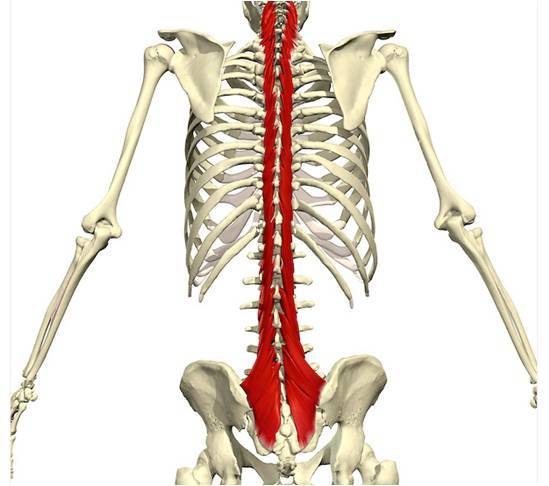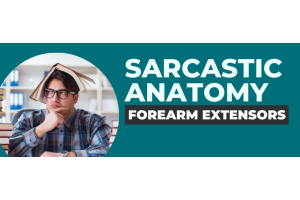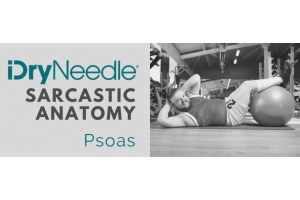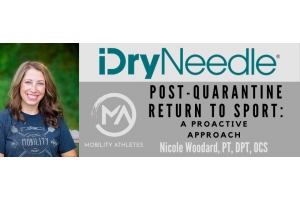


As a dry needling clinician and educator acknowledging my own education, practical experience, and ultimately my own biases - I’ll try so present this as neutral as possible. Because like many questions on application and dosage, the answer to this question is “it depends”. Depending heavily on our appraisal, expertise, and critical thinking as an automonous healthcare provider. But I also present this as a clinician and educator who has gone through various dry needling curricula, engages in regular dry needling literature review, and would like to think I carry an open-mind into the often dogmatic and “I’m right, you’re wrong” world of dry needling and/or manual therapy.
For context, I’d suggest reading both Chan Gunn’s literature on the Radiculopathic Model, as well as Travell & Simons foundational work on Triggerpoint Dry Needling – as they all provide great background for how the technique we know as dry needling was developed. And both provide a great framework for any dry needling discussion.
But with most people appreciating the maturation of an innovative technique going mainstream, dry needling has evolved into something more complex than one model versus another. You’ll hear terminology regarding peri-neural patterns, semi-standardized protocols, research comparing superficial vs deep needling, tendon/ligament treatment, twisting techniques, eliciting twitch responses vs no twitch response, indwelling electrical stimulation (and all of the parameters inherent), and the list goes on. All of this possibly leaving a new needler with more questions than answers; or even worse = becoming a dogmatic clinician I allude to, believing their dry needling philosophy is the only way to apply the technique. Certainly asking 10 different clinicians may yield 4-5 different answers and scenarios to consider, but for that novice dry needling practitioner – I present the latest version of my 2-Minute Dry Needling Tip.
When should I treat the spine segmentally?
To clarify, “treating segmentally” means needling the segmental multifidus and for now won’t get into the nuances of dosage or duration. Also, for the purpose of this post I’ll avoid the obvious symptomology of mechanical spine pain or segmental injury/diagnosis – which we’d naturally suspect treating the paraspinals as beneficial.

Essentially here are 4 scenarios I’d consider dry needling segmental multifidus…that may not be completely obvious.
#1 – There is no clear mechanism of injury for peripheral symptoms.
This might sound obvious…and it is. But how many of us default to treating the lower leg and foot for plantar fasciitis, and the extensor mass for lateral epicondylitis. Dig a little deeper. If the patient comes in and points to their elbow, shoulder, knee or ankle – but there is no traumatic or repetitive strain type of injury or onset, I’m already going to evaluate the spine. Maybe the first treatment or two I’ll focus on their localized elbow pain and scapular muscles with biomechanical influence, but the conversation that some of my findings are leading me upstream to the spine begins during the eval. More often than not, if they’re not experiencing the results they hoped for in the first two visits – they’ll be the one asking more about how their neck (or T-spine, or low back) is possibly contributing.
#2 - Treatment X, Y, Z has provided no lasting change.
One of those previous treatments may have even been dry needling (just not segmentally), but if that patient with _______ (insert any peripheral diagnosis ending with –itis) has had little success with all other treatments – I’ll investigate and treat the spine. As a cash pay clinician, you’ll see this a lot. They’ve seen 2 good PTs, a good chiro, had 6 months of regular massage, purchased new shoes, done their correctives diligently, tried inserts…all with short-term or no relief. Graston, ART, cryotherapy, 10 hours/week of foam rolling, rest…and nothing. Even the two injections they had only a gave weeks of relief. Investigate the spine. In this scenario, I’d even consider going directly to the spine. If I can make a change in their plantar fasciitis by treating L5-S1 multifidus, that dry needling session was as diagnostic as it was therapeutic. Again, involve the patient with the decision-making and thought process – explain why you’re thinking what you’re thinking.
#3 – If you find myotomal changes.
Again, this probably sounds pretty obvious, but I’m not talking complete motor loss or “hot” radicular symptoms. That IS obvious. Go back to that runner with plantar fasciitis, did you do a myotomal assessment? Did you? Did you reeeeeally? Well (back to #1 and #2), if there is no specific mechanism or onset that makes sense and the 4 other clinicians they’ve seen haven’t helped – you should. You do a myotomal assessment on your patient with plantar fasciitis and they have positive findings for the peroneals, EHL, and glute med. Maybe it’s their Achilles or plantar fascia that hurts, but you sir/madam – are dealing with an L5 issue.

#4 – They report positional or postural changes to their peripheral symptoms.
Not to say there aren’t 10 other reasons why it gets worse when they stand versus lay in bed, but following the idea of the spondylitic compression of a nerve root per Gunn’s Radiculopathic Model – one of them is a segmental contribution. Picture a fat kid (or any kid – to be PC) sitting on a water hose…the water can still flow, but it’s not full throttle. So Gunn explains the tonicity of multifdus contributing to spondylitic compression of our nerve root as it “flows” into its respective myotome.
So maybe this is all obvious, in which case – thank you for reading this far. But if there are certain patients or diagnoses you are not getting the clinical results you’d like, consider treating segmentally.

In summary and conclusion, as clinicians – remember we have an incredible ability to impart change in our patients. These changes may be myofascial, neuromuscular, physiologic, biochemical, and cortical – but it is how we reinforce these changes with function, movement, and education that will ultimately impact them the most.
And that’s the whole point. Helping people live happier and healthier lives.
As always, thanks for reading and feel free to follow us @iDryNeedle on (IG/Facebook) + @USdryneedling (Twitter), or our author Paul Killoren @DPTwithNeedles (iG/Twitter)!









